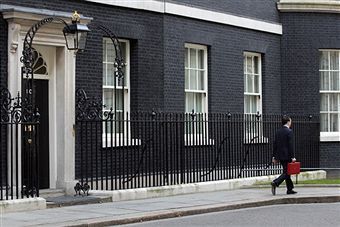 This was always going to be a rather modest budget. Having set out the Comprehensive
Spending Review last year, the government had already decided its broad plan; we were never going to see much more than some minor tinkering.
This was always going to be a rather modest budget. Having set out the Comprehensive
Spending Review last year, the government had already decided its broad plan; we were never going to see much more than some minor tinkering.
Nevertheless, as a budget billed as a serious driver for growth, it is a disappointment. George Osborne seems to have a reasonable understanding of the problems that need tackling, but he seems shy of solutions.
Concerned about the regulatory burden on business and enterprise, the Chancellor announced that he would reduce the cost of compliance by £350m. But, even on his own figures, this is a tiny slice of the £90bn overall cost to companies. Cutting red tape by 0.4 percent is the tiniest baby step in the right direction, but it’s hardly going to supercharge the stuttering recovery.
The UK tax rulebook now runs to around 10,000 pages. Osborne rightly acknowledges that having the longest tax code in the world is not something to be proud of. But lopping off 43 rules – around 100 pages perhaps – is a difference that will barely be noticed. Besides, his complex plans in other areas, such as enterprise zones, will probably actually increase the page count in total.
The greater than expected reduction in corporation tax deserves a cheer, but the offset for banks is a worrying sign that the bankers levy is a new form of “sin tax”. Continuing to play around with this every few months doesn’t just add costs on the financial services sector, it increases uncertainty too.
Perhaps one should be grateful for small mercies. The Chancellor had limited room for manoeuvre and hasn’t made things measurably worse. He is right to stick to Plan A on public spending cuts, although it’s worth remembering that around £600bn will actually be added to the national debt before the next election. We aren’t paying off the nation’s mortgage – we’re adding to it.
The revising down of the growth forecast for 2011 to 1.7 percent is more gloomy news, on top of high inflation figures. The Chancellor must be hoping that the projections over the next few years – of 2.5 percent or more per annum prove accurate. He hasn’t done much today for anyone to lower those projections, but he hasn’t done much to increase them either.
Mark Littlewood is director of the IEA






Comments